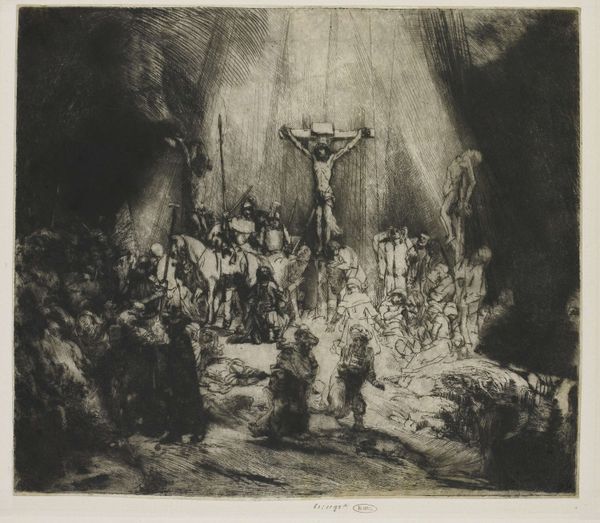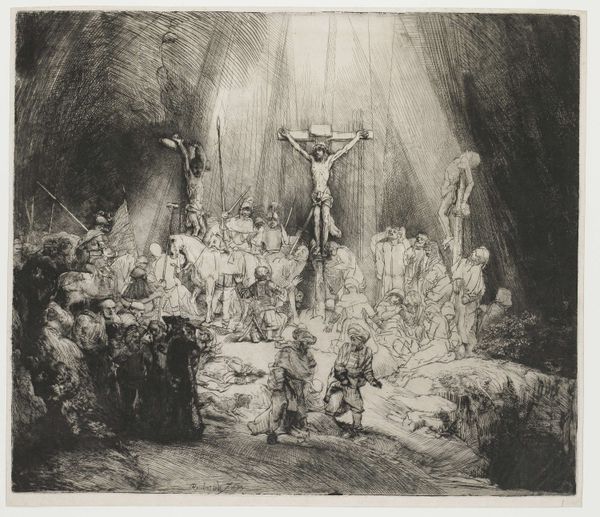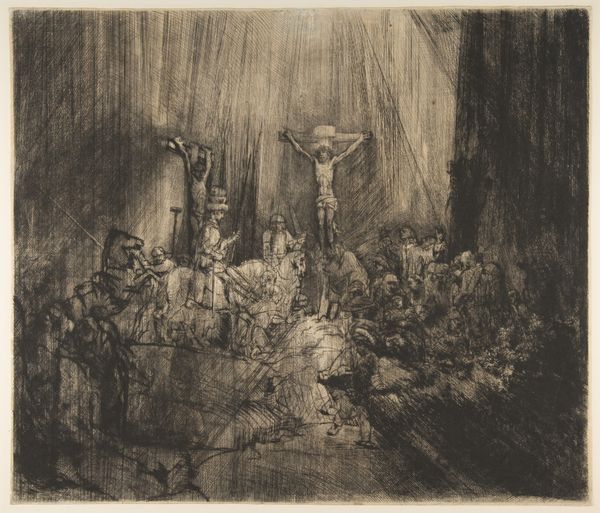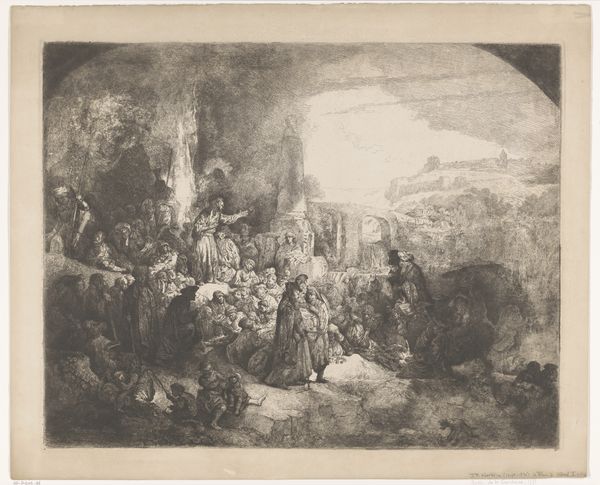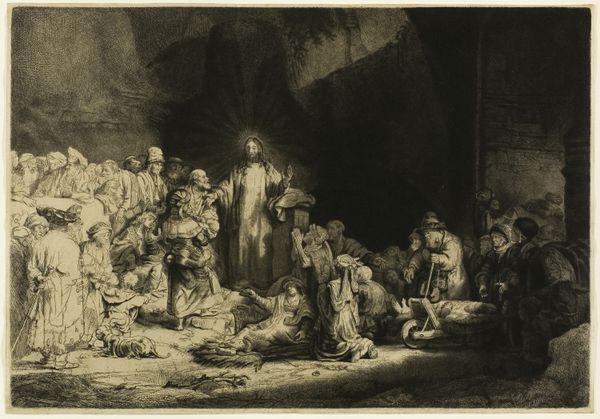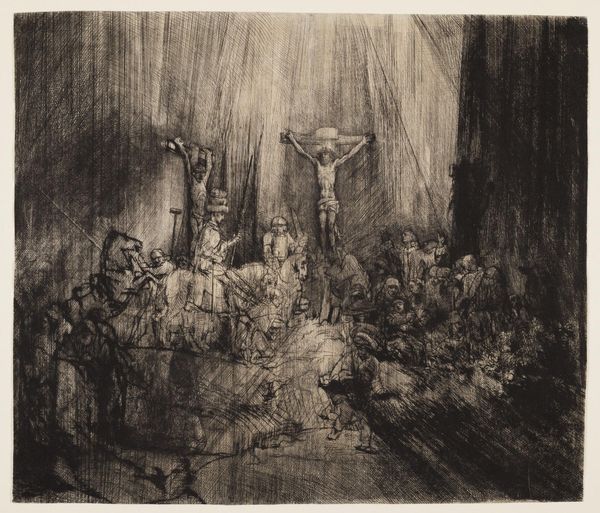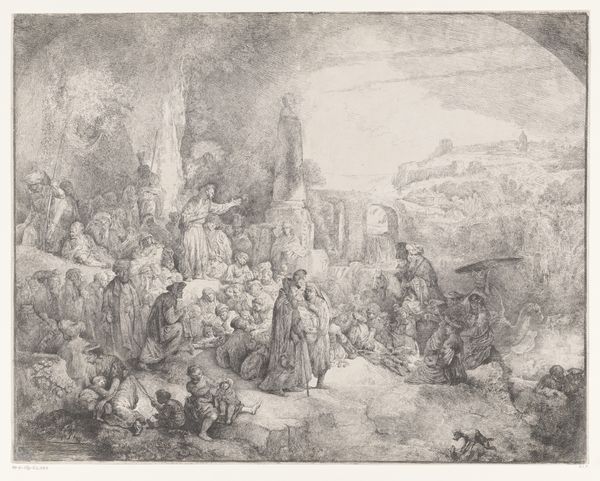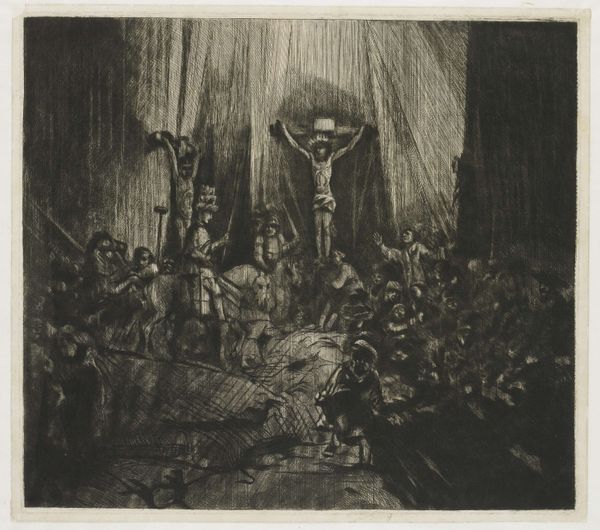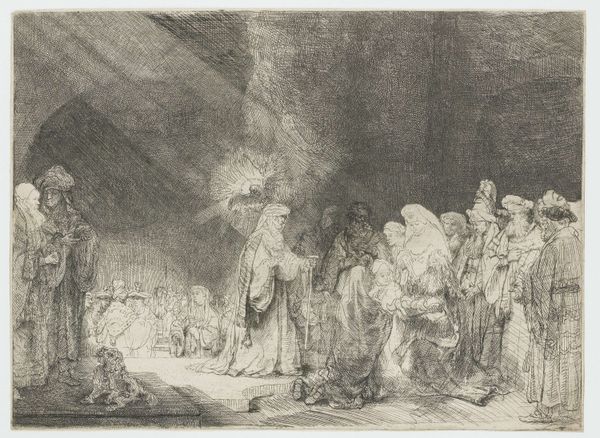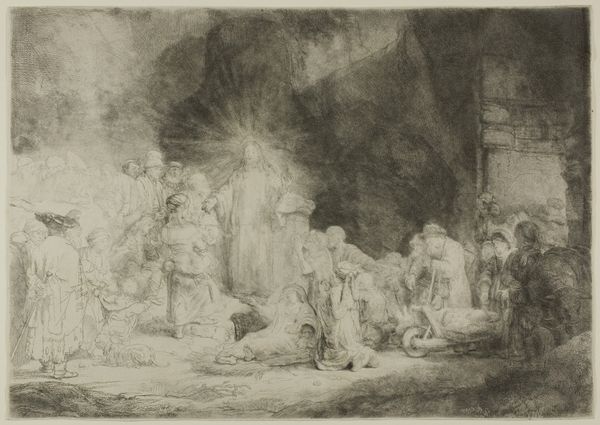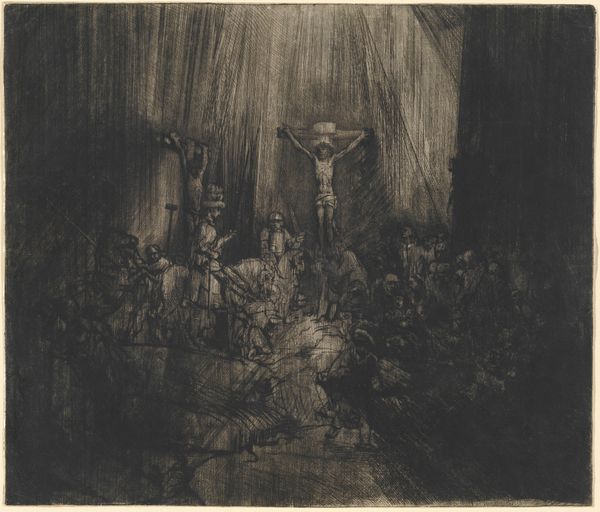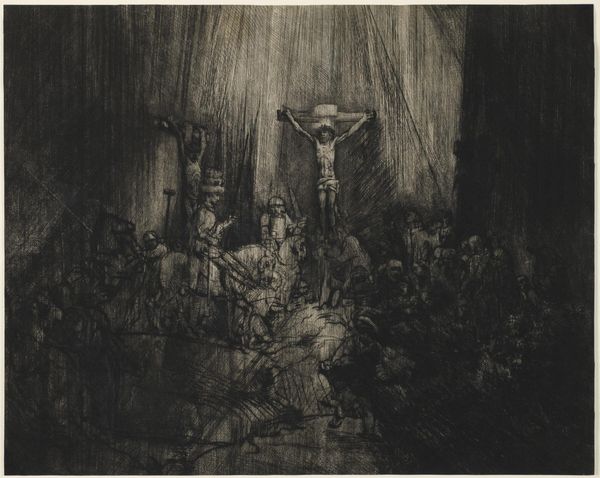
Christ Crucified between the Two Thieves (The Three Crosses) 1653
0:00
0:00
print, etching
#
baroque
#
ink painting
#
dutch-golden-age
# print
#
etching
#
charcoal drawing
#
figuration
#
history-painting
Dimensions: plate: 37.2 x 42.8 cm (14 5/8 x 16 7/8 in.) sheet: 37.8 x 44.1 cm (14 7/8 x 17 3/8 in.)
Copyright: National Gallery of Art: CC0 1.0
Curator: Oh, there's a piece that really grips you. "Christ Crucified between the Two Thieves," or "The Three Crosses" as it’s also known. It's a 1653 etching by Rembrandt van Rijn. The drama in it—whew! Editor: The darkness is immediate. A scene shrouded, lit fitfully—almost a sense of something apocalyptic about to unfold. Curator: You nailed it. See how Rembrandt uses these bursts of light—these near-violent scratches in the plate? They're like divine flares, aren't they, cutting through the gloom? It's not just pictorial; it's a study in emotional chiaroscuro. He really made light itself another character in the narrative. Editor: It strikes me that light performs an essential structural function. Look at how the strong verticals of the crosses organize the composition; then these sharp diagonals of light cleave it. A clear hierarchy of suffering. Curator: Absolutely. Notice how Rembrandt uses drypoint to achieve this velvety, almost burred darkness, particularly around the edges. It intensifies the feeling of enclosure. We are trapped within this tragic moment with them. But then look at the figures at the foot of the cross—each reacting in their unique way. The etching transcends mere depiction, doesn’t it? Becomes a meditation on human reactions to extreme suffering. Editor: And the range of reactions. Some grieving, some indifferent, some seemingly malevolent in shadow. Rembrandt constructs the image through stark oppositions: light and dark, salvation and damnation, agony and apathy. He lays bare the anatomy of the human soul. Curator: The sheer intensity of line. It reminds me that these weren't casual illustrations but born from something visceral within him. Knowing what was going on in the artist's life while he worked on it gives an intimate look at this devastating scene and an invitation to see that even in the darkest times there is light, somehow, trying to pierce through. Editor: Yes, it speaks to the inherent tension between formalism and subjective expression. Looking through this print and accounting for this complexity enriches the work as more than just an illustrative tool but as a piece with personal narrative. Curator: Beautifully put. Rembrandt invites us into a space of contemplation – demanding we reckon with our own mortality. Editor: A brutal reminder of what it means to be human.
Comments
No comments
Be the first to comment and join the conversation on the ultimate creative platform.
